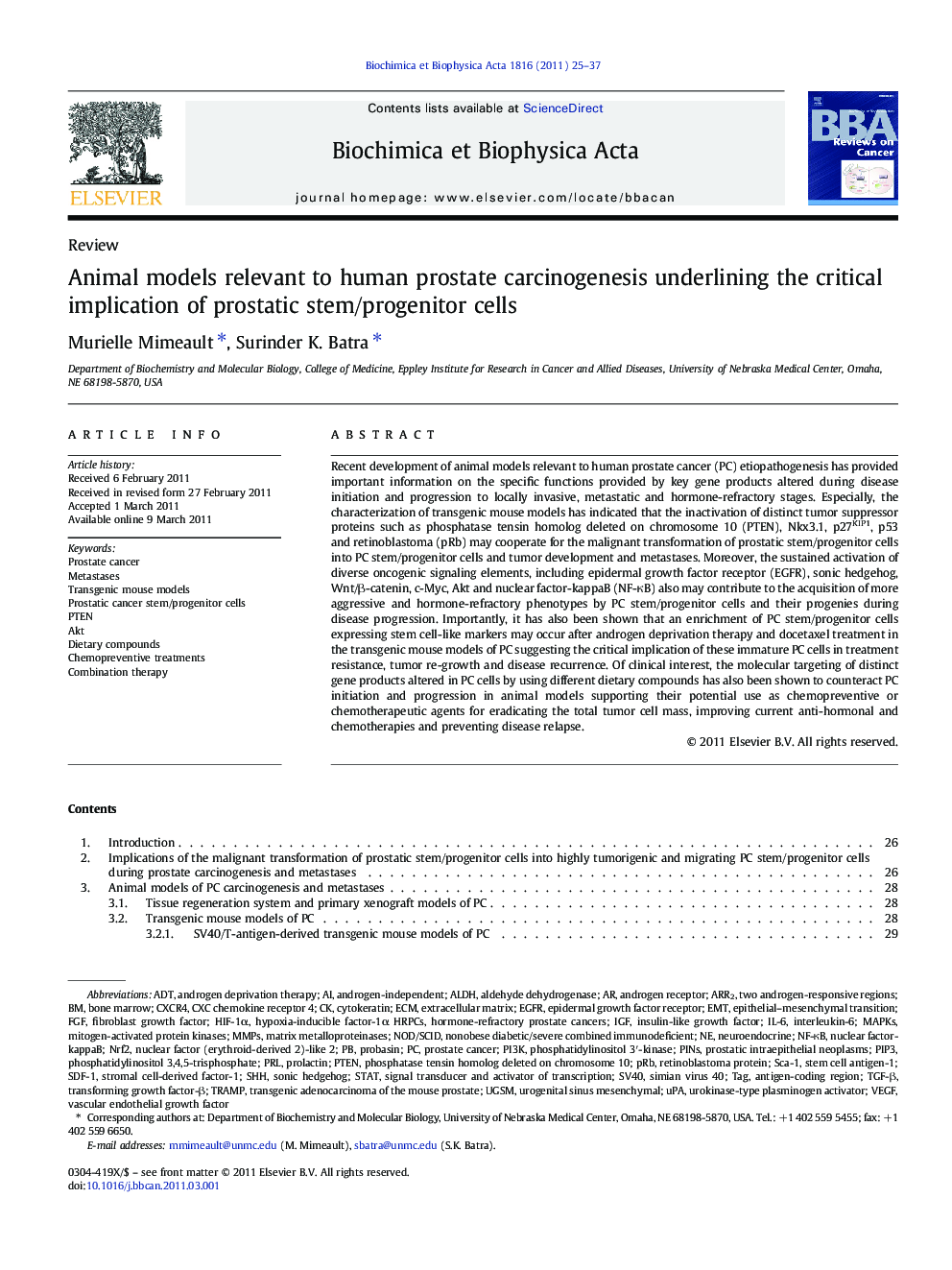| Article ID | Journal | Published Year | Pages | File Type |
|---|---|---|---|---|
| 10895630 | Biochimica et Biophysica Acta (BBA) - Reviews on Cancer | 2011 | 13 Pages |
Abstract
Recent development of animal models relevant to human prostate cancer (PC) etiopathogenesis has provided important information on the specific functions provided by key gene products altered during disease initiation and progression to locally invasive, metastatic and hormone-refractory stages. Especially, the characterization of transgenic mouse models has indicated that the inactivation of distinct tumor suppressor proteins such as phosphatase tensin homolog deleted on chromosome 10 (PTEN), Nkx3.1, p27KIP1, p53 and retinoblastoma (pRb) may cooperate for the malignant transformation of prostatic stem/progenitor cells into PC stem/progenitor cells and tumor development and metastases. Moreover, the sustained activation of diverse oncogenic signaling elements, including epidermal growth factor receptor (EGFR), sonic hedgehog, Wnt/β-catenin, c-Myc, Akt and nuclear factor-kappaB (NF-κB) also may contribute to the acquisition of more aggressive and hormone-refractory phenotypes by PC stem/progenitor cells and their progenies during disease progression. Importantly, it has also been shown that an enrichment of PC stem/progenitor cells expressing stem cell-like markers may occur after androgen deprivation therapy and docetaxel treatment in the transgenic mouse models of PC suggesting the critical implication of these immature PC cells in treatment resistance, tumor re-growth and disease recurrence. Of clinical interest, the molecular targeting of distinct gene products altered in PC cells by using different dietary compounds has also been shown to counteract PC initiation and progression in animal models supporting their potential use as chemopreventive or chemotherapeutic agents for eradicating the total tumor cell mass, improving current anti-hormonal and chemotherapies and preventing disease relapse.
Keywords
PRLIGFMmpsNrf2SDF-1FGFPRBHIF-1αECMTGF-βCXCR4uPASV40PINSPIP3transgenic adenocarcinoma of the mouse prostateSca-1TAGADTEGFRIL-6ALDHNF-κBPI3KMAPKsNOD/SCIDaldehyde dehydrogenaseSTATStem Cell Antigen-1androgen-independentAktinterleukin-6transforming growth factor-βTRAMPEMTShhandrogen deprivation therapyCombination therapyProstate cancerProbasincytokeratinsonic hedgehogneuroendocrinestromal cell-derived factor-1Vascular endothelial growth factorVascular Endothelial Growth Factor (VEGF)fibroblast growth factorInsulin-like growth factornuclear factor (erythroid-derived 2)-like 2nuclear factor-kappaBphosphatidylinositol 3′-kinasephosphatidylinositol 3,4,5-trisphosphateurokinase-type plasminogen activatorExtracellular matrixSignal transducer and activator of transcriptionMetastasesMatrix metalloproteinasesTransgenic mouse modelsbone marrowSimian virus 40retinoblastoma proteinProlactinPtenmitogen-activated protein kinasesEpithelial–mesenchymal transitionCXC chemokine receptor 4Androgen ReceptorEpidermal growth factor receptor
Related Topics
Life Sciences
Biochemistry, Genetics and Molecular Biology
Cancer Research
Authors
Murielle Mimeault, Surinder K. Batra,
